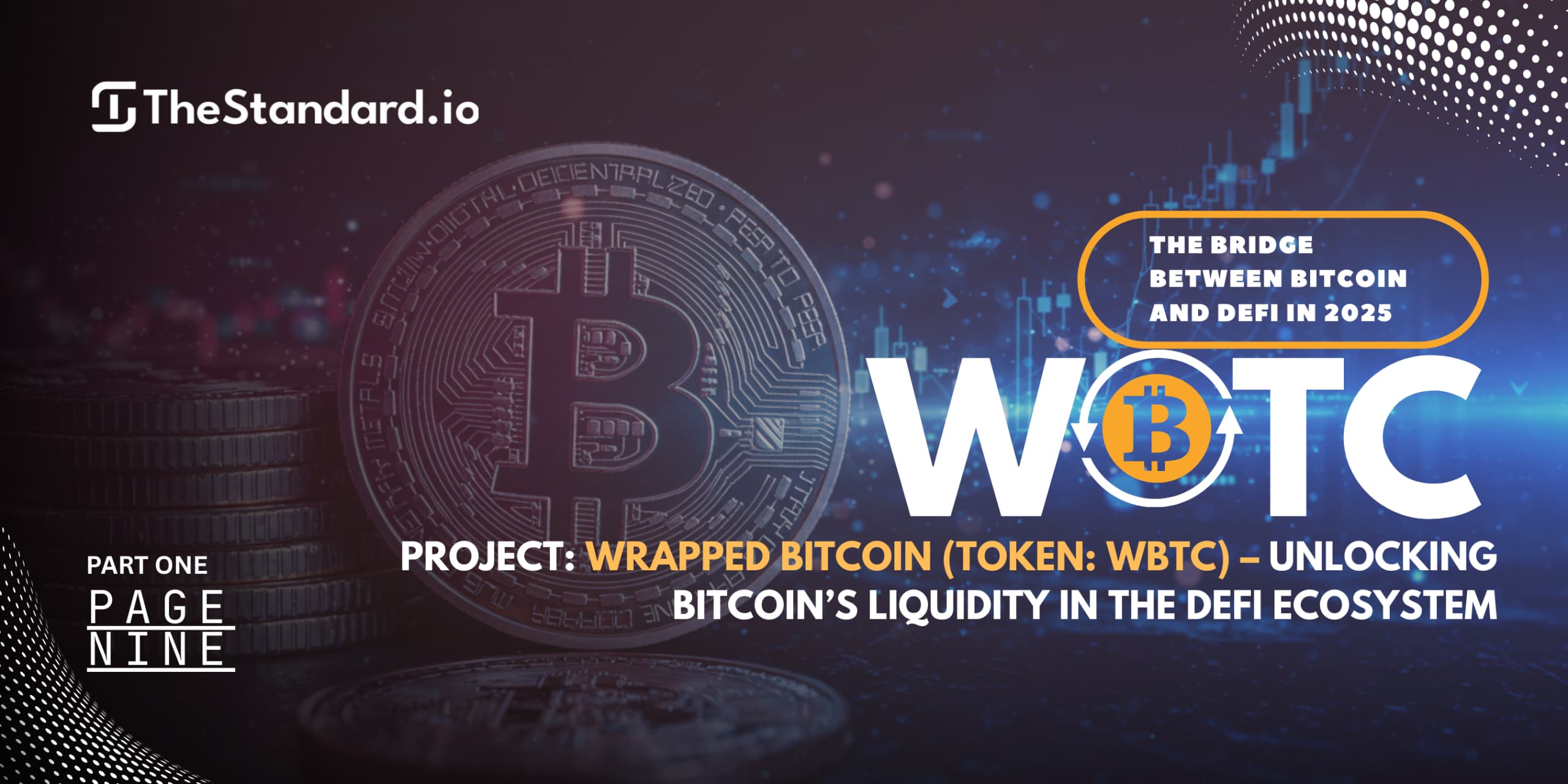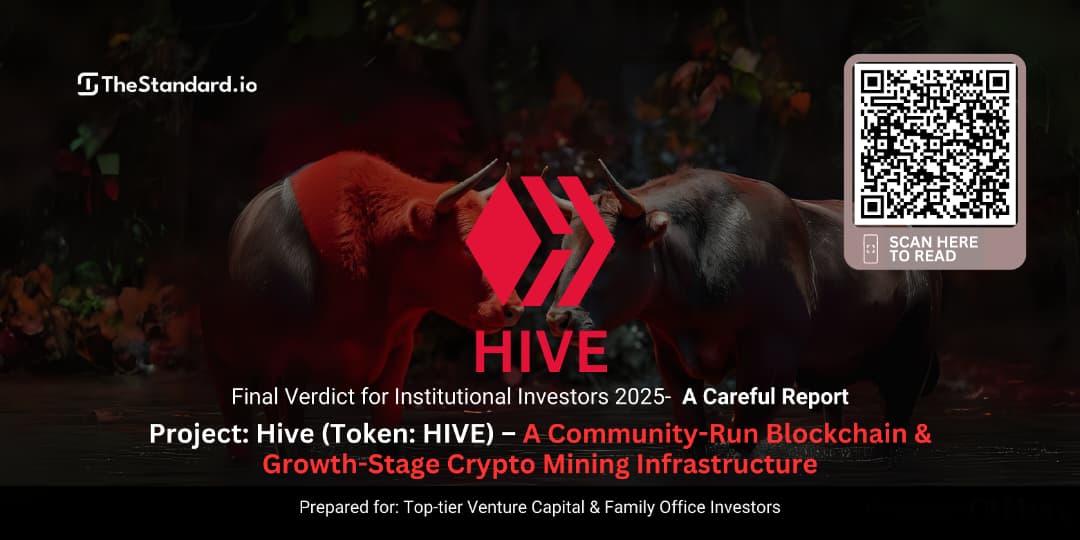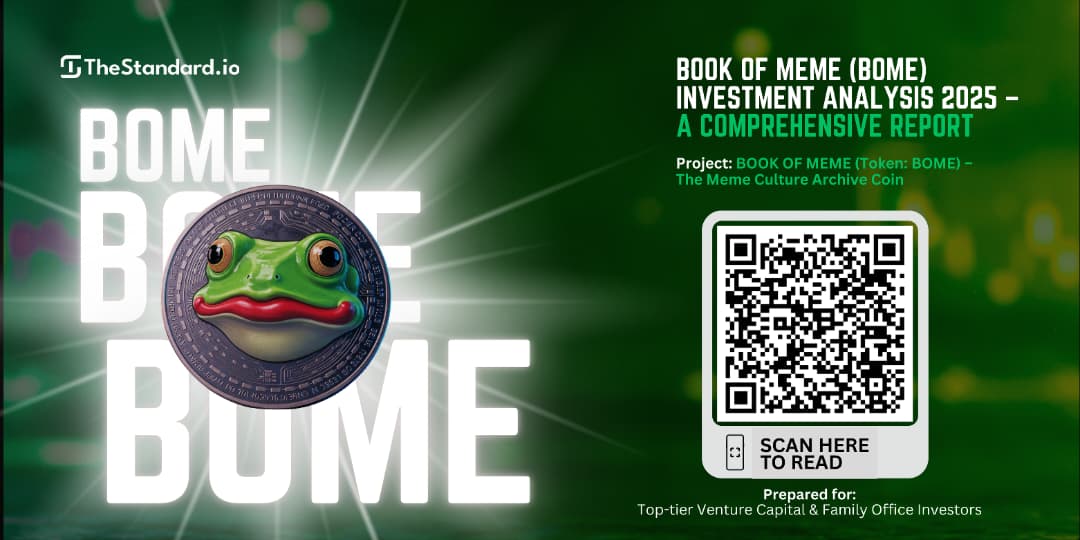Wrapped Bitcoin (WBTC): The Bridge Between Bitcoin and DeFi in 2025

Part 1 / Page 9
Here is Section 2G: Governance Structure for Wrapped Bitcoin (WBTC).
2G. Governance Structure
Centralized vs. Decentralized: Is the Platform Controlled by a Central Body or Governed by Token Holders?
The governance structure of Wrapped Bitcoin (WBTC) is a unique blend of centralized and decentralized features, designed to strike a balance between control, transparency, and flexibility. The WBTC governance model operates with a centralized custodian (BitGo) for Bitcoin reserves, yet decision-making related to platform upgrades, governance, and the addition of new custodians or merchants is decentralized and handled by a Decentralized Autonomous Organization (DAO). This model ensures that critical decisions are made collectively by stakeholders, but it still relies on trusted centralized entities for the custody of the Bitcoin backing WBTC.
1. Centralized Custodianship:
At the core of WBTC’s operational model is BitGo, the regulated custodian responsible for storing the Bitcoin reserves that back every WBTC token. While WBTC itself is decentralized in its interaction with DeFi applications, it still requires a centralized entity to guarantee the 1:1 backing of WBTC with Bitcoin. This centralization is necessary to ensure security and to meet regulatory standards for institutional adoption. The WBTC token’s minting and redemption process relies on BitGo’s secure custody service, meaning users must trust the custodian to properly handle their Bitcoin deposits and ensure the backing of each WBTC token.
2. Decentralized Governance via the DAO:
The Decentralized Autonomous Organization (DAO) governs decisions on platform upgrades, protocol changes, and the selection of new custodians or merchants. The WBTC DAO comprises key stakeholders, including BitGo, Kyber Network, Ren Protocol, and the broader community. The DAO operates as a decentralized voting system that gives stakeholders the power to propose and vote on key decisions affecting the WBTC protocol.
The WBTC DAO’s decision-making process involves a community-driven approach where proposals are submitted, discussed, and voted on by token holders and governance participants. Key decisions, such as adding new custodians, merchants, or integration partners, are made via governance proposals and voting. For example, when the WBTC team decided to integrate WBTC into new DeFi platforms, they consulted the DAO to ensure that all community members had a say in the protocol’s development.
3. Key Governance Features:
- Voting Power Distribution: Governance decisions are made through tokenized votes, where stakeholders with WBTC tokens (or other tokens, such as Kyber’s native tokens) can participate. Voting power is distributed to the project’s core stakeholders, including merchants and custodians, and the broader community. This model allows for a balance of control between centralized and decentralized actors.
- Protocol Upgrades and Changes: All major protocol upgrades (such as changes to minting, redeeming mechanisms, or adjustments to the WBTC smart contract) are subject to a vote by the WBTC DAO. Proposals are drafted by the core team, then presented to the community for discussion and voting. If the community agrees, the proposal is implemented by the development team.
- Decentralized Auditing and Transparency: The DAO also ensures that WBTC remains fully transparent and compliant with regulatory standards. Regular third-party audits and proof-of-reserve reports ensure that WBTC tokens are fully backed by Bitcoin. These reports are accessible to the public and allow stakeholders to verify the token's backing. The governance structure ensures that any changes to the auditing or reserve process are decided collaboratively within the DAO.
DAO vs. Centralized Decision-Making:
WBTC's governance model highlights the balance between centralized security and decentralized community control. While the custodial role of BitGo is centralized (to ensure that Bitcoin reserves are properly held), the governance of the WBTC protocol is decentralized through the DAO. This dual model is advantageous because it provides institutional investors and users with the security of a trusted custodian (BitGo), while simultaneously giving the community a voice in the direction of the project.
However, some critics of the system argue that this model still places a considerable amount of trust in the centralized custodian, as BitGo holds control over the Bitcoin reserves and is responsible for managing the minting and redemption process. This centralized element contrasts with the fully decentralized nature of other DeFi protocols, where custody and decision-making are more distributed.
Nevertheless, the hybrid model has proven effective for WBTC, allowing it to offer both security and transparency while maintaining flexibility in decision-making. The governance system ensures that the community has control over decisions, while the centralized custodian model ensures the security and integrity of the Bitcoin reserves that back WBTC.
DAO Participation and Structure:
The WBTC DAO is structured to include several key stakeholders, including:
- BitGo: The custodian responsible for securing Bitcoin reserves.
- Kyber Network: A decentralized liquidity protocol that provides liquidity for WBTC.
- Ren Protocol: A decentralized protocol responsible for enabling Bitcoin to be wrapped on Ethereum.
- WBTC Users: DeFi developers, platform operators, and individual users who hold WBTC tokens and can participate in governance decisions.
- Third-party Validators and Auditors: Entities that ensure the protocol adheres to regulatory requirements and maintains its transparency and security through third-party audits.
Each stakeholder has different roles within the DAO. For instance, BitGo has a prominent role in governance related to custody and reserve issues, while Kyber Network and Ren Protocol provide input on liquidity and protocol upgrades. Other WBTC holders (such as DeFi platforms, developers, and institutions) can participate in governance decisions by voting on key proposals (WBTC Network).
Key Risks in Governance:
Despite the decentralized features of the WBTC DAO, there are still several risks associated with its governance structure:
- Centralized Custodianship Risk: The centralized role of BitGo in holding the Bitcoin reserves means that the project is somewhat reliant on a single party. While BitGo has a strong reputation for security and compliance, this centralization could pose risks if the custodian experiences operational or regulatory challenges.
- DAO Voting Efficiency: While the DAO allows for decentralized decision-making, there is a potential risk that the governance process could be slow or inefficient. The proposal and voting process can take time, and consensus among diverse stakeholders is not always guaranteed. If the DAO becomes inactive or decision-making processes are delayed, it could hinder the protocol's ability to adapt quickly to market changes.
- Security of the Voting Process: The governance model of WBTC relies on the secure management of voting rights and the integrity of the smart contracts that facilitate the voting process. If the smart contract code is compromised, or if voting becomes manipulated by a large holder of WBTC tokens, it could undermine the effectiveness of the DAO. Ensuring robust security and participation in governance is critical for the long-term success of the project.
Conclusion:
The governance structure of WBTC represents a hybrid model that combines centralized security with decentralized decision-making. This system has allowed WBTC to maintain high levels of security and compliance while also empowering its community to have a voice in the project’s future. As the DeFi space continues to grow, the governance structure will play a critical role in ensuring WBTC adapts to market demands and continues to offer transparent, secure, and efficient Bitcoin liquidity within the Ethereum ecosystem.
WBTC’s DAO structure ensures that stakeholders can participate in the decision-making process, while BitGo’s custodianship provides the security and reliability needed for institutional adoption. This combination of centralized and decentralized features allows WBTC to remain one of the most trusted Bitcoin-backed assets in the DeFi space.
Next is 2H: Conclusion
Having explored the governance structure of Wrapped Bitcoin (WBTC), we now transition to Section 2H: Conclusion, where we will summarize the team’s strengths, weaknesses, and potential areas for improvement. This section will provide a final evaluation of the WBTC team’s performance and governance model.
This concludes Section 2G: Governance Structure for Wrapped Bitcoin (WBTC). We've analyzed how WBTC's governance model balances centralized custodianship with decentralized community control. Next, we will provide a comprehensive summary and conclusion of the WBTC team’s effectiveness in Section 2H: Conclusion.
Thank you for taking the time to read this article. We invite you to explore more content on our blog for additional insights and information.
https://www.thestandard.io/blog
"If you have any comments, questions, or suggestions, please do not hesitate to reach out to us at [ https://discord.gg/K72hed6FRE ]. We appreciate your feedback and look forward to hearing from you."
CLICK HERE TO CONTINUE
PART 1 / PAGE 10: www.thestandard.io/blog/wrapped-bitcoin-wbtc-the-bridge-between-bitcoin-and-defi-in-2025-10
6 of the best crypto wallets out there
Vulputate adipiscing in lacus dignissim aliquet sit viverra sed etiam risus nascetur libero ornare non scelerisque est eu faucibus est pretium commodo quisque facilisi dolor enim egestas vel gravida condimentum congue ultricies venenatis aliquet sit.
- Id at nisl nisl in massa ornare tempus purus pretium ullamcorper cursus
- Arcu ac eu lacus ut porttitor egesta pulvinar litum suspendisse turpis commodo
- Dignissim hendrerit sit sollicitudin nam iaculis quis ac malesuada pretium in
- Sed elementum at at ultricies pellentesque scelerisque elit non eleifend
How to choose the right wallet for your cryptos?
Aliquet sit viverra sed etiam risus nascetur libero ornare non scelerisque est eu faucibus est pretium commodo quisque facilisi dolor enim egestas vel gravida condimentum congue ultricies venenatis aliquet sit quisque quis nibh consequat.

How to ensure the wallet you’re choosing is actually secure?
Integer in id netus magnis facilisis pretium aliquet posuere ipsum arcu viverra et id congue risus ullamcorper eu morbi proin tincidunt blandit tellus in interdum mauris vel ipsum et purus urna gravida bibendum dis senectus eu facilisis pellentesque.
What is the difference from an online wallet vs. a cold wallet?
Integer in id netus magnis facilisis pretium aliquet posuere ipsum arcu viverra et id congue risus ullamcorper eu morbi proin tincidunt blandit tellus in interdum mauris vel ipsum et purus urna gravida bibendum dis senectus eu facilisis pellentesque diam et magna parturient sed. Ultricies blandit a urna eu volutpat morbi lacus.
- At at tincidunt eget sagittis cursus vel dictum amet tortor id elementum
- Mauris aliquet faucibus iaculis dui vitae ullamco
- Gravida mi dolor volutpat et vitae lacus habitasse fames at tempus
- Tellus turpis ut neque amet arcu nunc interdum pretium eu fermentum
“Sed eu suscipit varius vestibulum consectetur ullamcorper tincidunt sagittis bibendum id at ut ornare”
Please share with us what is your favorite wallet using #DeFiShow
Tellus a ultrices feugiat morbi massa et ut id viverra egestas sed varius scelerisque risus nunc vitae diam consequat aliquam neque. Odio duis eget faucibus posuere egestas suspendisse id ut tristique cras ullamcorper nulla iaculis condimentum vitae in facilisis id augue sit ipsum faucibus ut eros cras turpis a risus consectetur amet et mi erat sodales non leo.

Subscribe to our newsletter.
Get the latest alpha from us, and the Chainlink build program in an easy-to-read digest with only the best info for the insider.
It's an easy one-click unsub, but I bet you won't; the info is just too good.

Try the future of borrowing today.
Don't wait. It's easy to open a free smart vault
then start earning a yield and borrowing today.
0xf5A27E55C748bCDdBfeA5477CB9Ae924f0f7fd2e
USDs Contract on Arbitrum:
0x2Ea0bE86990E8Dac0D09e4316Bb92086F304622d










